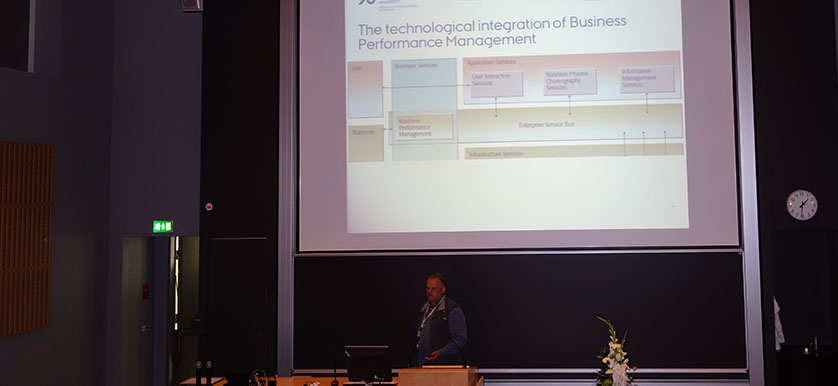Public Service Broadcasting and Performance Management Architecture – a discussion with Torben Tambo and Ole Dahl Gabel, at the 2014 PMA Conference

The second day of presentations at the 2014 PMA Confrence brought some insights about Performance Management Architecture, from Torben Tambo, Associate Professor at the Aarhus University, and Ole Dahl Gabel, Business Intelligence Consultant at the Danish Broadcasting Company.
Titled “Discussing performance management architecture in public service broadcasting”, the paper looks at the Danish Broadcasting Corporation’s case, namely its Performance Management Architecture, highlighting dos and faux-pas.
Explaining the influence and value of the Danish Broadcasting Company, the authors show that it is the largest media company in Denmark, with a budget of half a billion Euro, and has the largest media consumption rate. This translates into the company having the largest share in the European media market.
Aiming for improvement, the company’s performance management system is centered on 3 measurement tracks, as presented by the authors:
- Financial reporting, in agreement with governmental reporting standards;
- Reporting on operating contracts fulfilment to the Ministry of Culture;
- Selective or impromptu reporting at lower departmental levels and management level, respectively.
Given that the company operates fully digitally, it represents an opportunity for implementing and designing a better Performance Management system. As pointed out by the author, due to the fact that everything is highly digitalized, data is easy to retrieve.
Their data collection process implies the alignment between data sources and the respective business processes. The dynamic of this process is thus highlighted, for the Danish Broadcasting Corporation:
- Input, containing: Portfolio, Resources and Overall equipment efficiency;
- Operation: Planning, Cash burn-down, Project progress and Time dependency;
- Output: Production targets and Production time;
- Reference: Productivity, Price per minute and Quality.
Also, as pointed out in the presentation, there are several support functions required for the actual broadcasting activity, which have not been fully considered. Some of these include:
- Real estate
- Equipment
- Production facilities
- IT services.
As highlighted by the authors, out of roughly 300 identified data sources, only 75 such KPIs are being used currently, albeit the opportunity to gain from the pervasively available data sources.
The presentation concluded with the suggestion that the media company should be connecting activities and measurements more closely. This will be favored by the ongoing Performance Management transition process, of shifting from a Performance Management System to Performance Management Architecture.

Tags: Performance Management, PMA 2014 Conference




